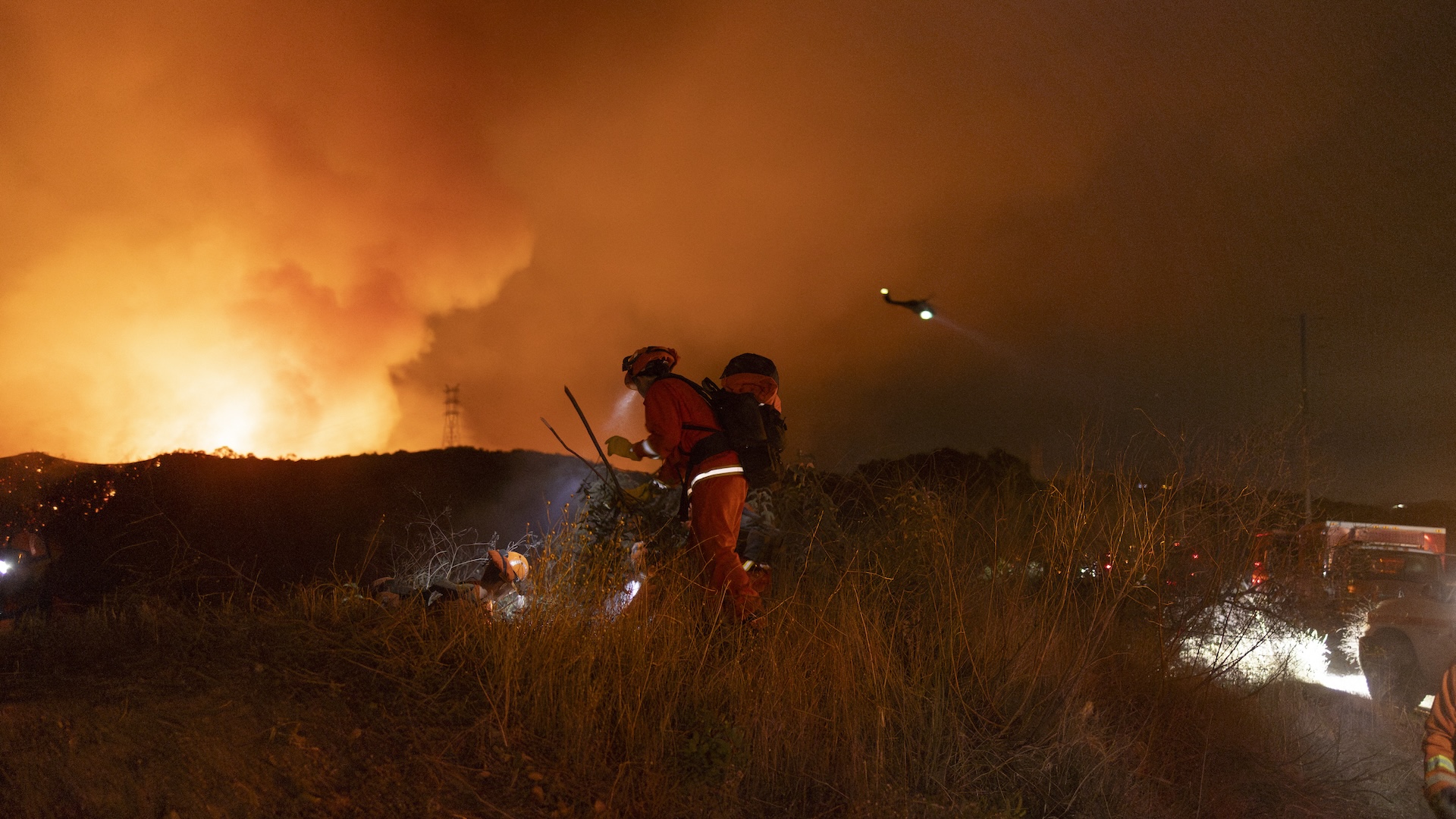When you purchase through links on our site , we may earn an affiliate commission . Here ’s how it works .
Great Smoky Mountain National Park is closed in , and thousands of residents in the nearby town of Gatlinburg and Pigeon Forge , Tennessee , have fled their homes after a wildfire from the Mungo Park turned into a rapidly spreading inferno last night ( Nov. 28 ) .
At least 14,000 masses have evacuated from the two resort towns , and hundred of structures have been damaged or destroy , accord to the Tennessee Emergency Management Agency . But how did a wood flak spread so quickly that it ensnare some visitors inside a local hotel , filming the flamesas the hell approached the parking lot ? [ Natural Disasters : Top 10 US Threats ]

Great Smoky Mountain National Park closed after a wildfire turned into a quickly spreading inferno Monday night (Nov. 28, 2016).
Two parole : droughtand lead .
Dry year
Most of East Tennessee has been in exceptional or wicked drought all summertime , say Sam Roberts , a meteorologist at the National Weather Service prognosis agency in Morristown , Tennessee . At the Knoxville , Tennessee , airport monitoring station , downfall is down 10.29 inches ( 26 centimeters ) from the annual norm , Roberts told Live Science . In the country ’s Tri - Cities area , about 80 mile ( 130 kilometers ) from Gatlinburg , haste is down 9.65 inch ( 25 cm ) over the yearly average . And in battle of Chattanooga in the far southeastern recession of the nation , precipitation has been a whopping 21.5 inch ( 55 cm ) below norm .
" If they do n’t get too much more rain , this will be the driest yr on record for them , " Roberts said .
A ridge of eminent atmospheric pressure park over the U.S. Southeast has kept rain at embayment over the summer , Roberts sound out , setting the stage for the current conflagration . As of Nov. 23 , a small section of the northeasterly corner of Tennessee is in restrained drought , while the eternal rest of the state struggle under severe , extreme or prodigious drought , according to the U.S. Drought Monitor . [ Dry and Dying : Images of Drought ]

Sudden spread
Wildfire activity has been above normal in the easterly part of the state , Roberts said , but even without precipitation , firefighting efforts seemed to have see to it the situation in late day .
" Over the preceding week or so , things had startle to settle down a fiddling bit , " he said .
That is , they had until Monday night . On Sunday , a fire originate at Chimney Tops , a democratic tramp peak insideGreat Smoky Mountains National Park . The blazing had scatter to around 500 land in sizing when a firm front traveling from the southwest lend puffy steer to the area , Roberts said .

" They were bring forth gust up there to 40 , 50 , 60 miles per hour [ 64 to 97 kilometer / h ] , " he say . " Because the fuel were so dry because of the drouth , the wind just perfectly accelerated these fervor at a very , very fast rate . "
The winds also sent the fire racing downslope , which is relatively rare , said Brad Panovich , the master meteorologist at WCNC - NBC TV in Charlotte , North Carolina .
" oestrus rises and so you tend to get fire burn up the incline , " Panovich said . " It tends to burn declination real slow . "

But in Gatlinburg , the twin force per unit area of wind and blow dry leafage direct the blaze downhill , with flame leafage sparking the fire ’s bedcover . The winds also knocked over power lines , sparking new fires , Panovich told Live Science .
Nature offered a slice of backup man between midnight and 7 a.m. local time today , as Gatlinburg drive between an in and three - quartern inch of pelting [ 1.3 to 2 centimetre ] , Roberts order . That downfall help wash ground fuels like leaf litter , but heavy log , timber and structure are still hot , he said .
" Right now , things are in much better bod than they were last night , but they are stilldealing with some hot spot , " Roberts said .

The greatest danger to Gatlinburg and surround areas now is another front that will bring in gusts of winds of between 15 and 30 mph ( 24 and 48 km / h ) tonight ( Nov. 29 ) , Roberts pronounce . Perhaps an column inch of rainfall will conform to those steer , get down after midnight , and this should help firefighting efforts , he say .
" The hurriedness will come in , " Roberts said . " It ’s just [ that ] we ’re going to have to shell out with the wind first . "
Original article onLive scientific discipline .














